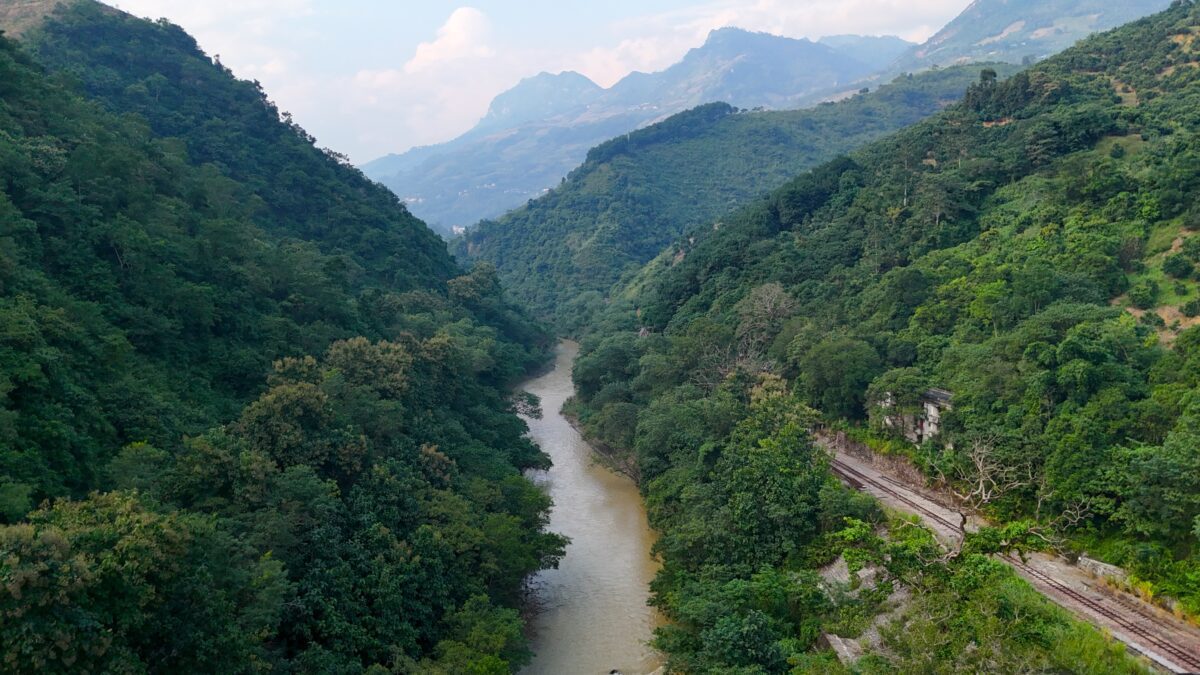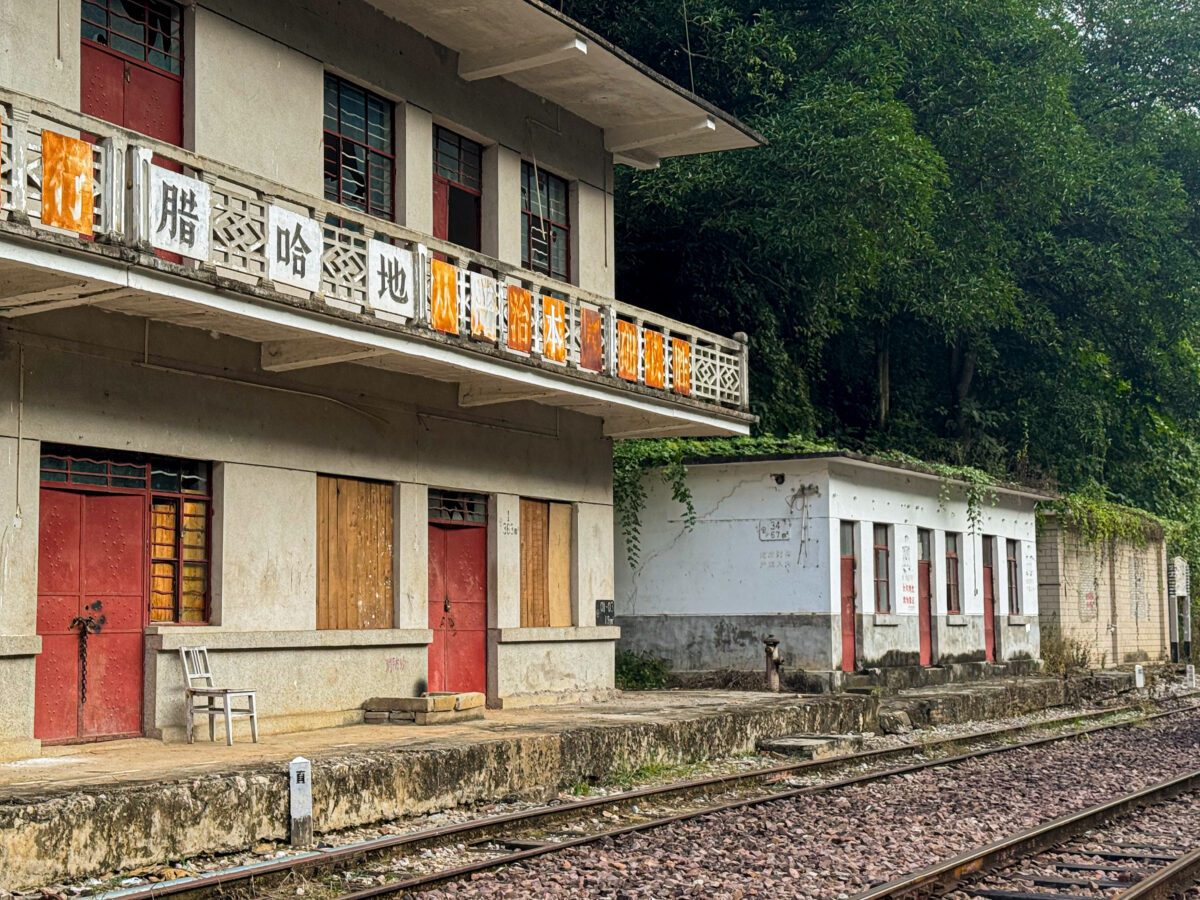
Located along the Yunnan-Vietnam Railway, Lahadi Train Station remains one of various abandoned stations near Renzi Bridge in Pingbian County
Among the most popular attractions in Pingbian Miao Autonomous County is Renzi Bridge, the famous French-engineering marvel built in 1908. Yet, before this engineering masterpiece was completed, another often-overlooked train station, shrouded with local lore and history, was quietly making its own history. I’ve arrived at Lahadi Train Station (腊哈地站), another unique station along the Yunnan-Vietnam Railway (YVR), and just 70 kilometers from Hekou Train Station, the border station into Yunnan province.
After driving an hour from the town of Pingbian, my Gaode (高德) navigational app notifies me I’ve arrived near Lahadi Train Station. Hidden behind a thick forest wall, a swaying wooden bridge is dangling above the flowing Nanxi River – a dramatic entrance to a forgotten piece of Yunnan-Vietnam Railroad history. With a view of what appears to be old train station structures and a yellow-mustard, French colonial building on a hilltop, I take my chances and take the only path across.
While Renzi Bridge continues to draw travelers and railroad enthusiasts, most people exploring railroad history in Pingbian will also visit the weekly Monday farmer’s market that occurs at Baiheqiao Train Station. Located four kilometers north from Lahadi Train Station, the local gathering is now China’s last farmer’s market occurring on a railway. It is possible to visit all three destinations on a Monday.
Renzi Bridge Influence and Pingbian Railroad Background
The network of train stations built across this region of Honghe Prefecture, all played essential roles in the transportation of supplies and manpower towards the construction of the northern uphill railroad segments and train station.
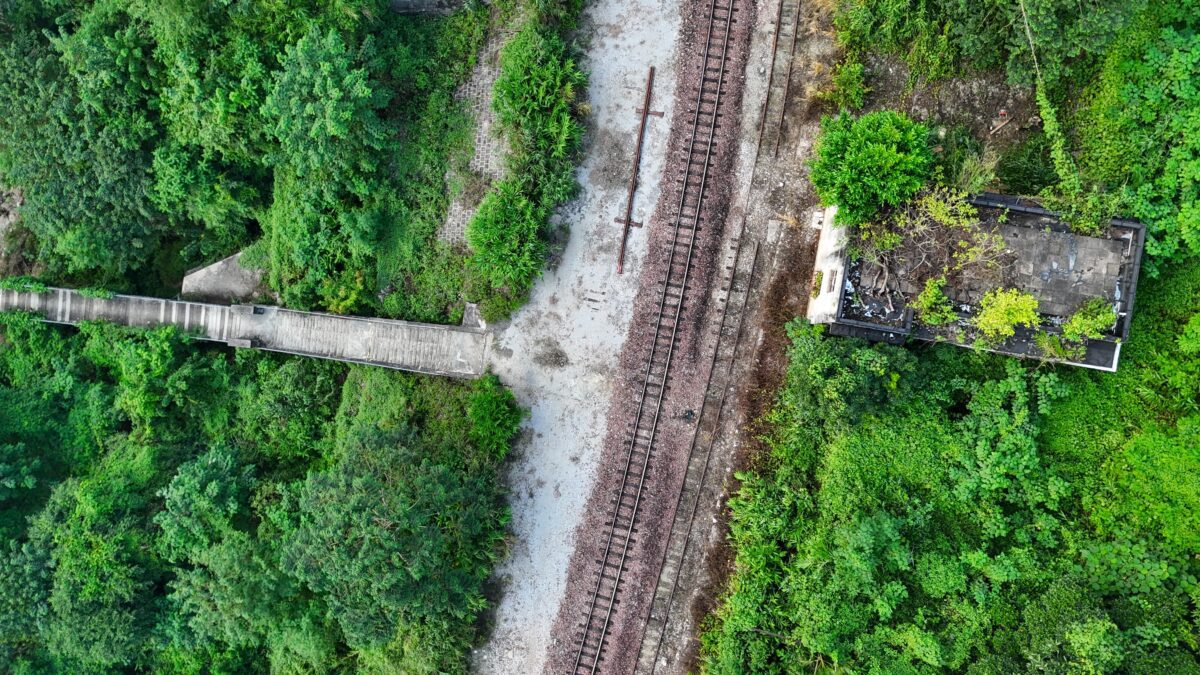
Built in 1908, Lahadi Train Station, along with Bisezhai and Zhicun Train Stations were the few stations equipped with locomotive turntables. Lahadi Train Station once served as a refueling station for trains heading further south to the border at Hekou or for trains heading north from Vietnam towards Kunming. The name “Lahadi” derives its name from the Miao ethnic-minority language, translating into “the place where food rots easily.”
It’s a fitting name, as Lahadi’s tropical and humid climate can reach a sweltering 40°C in the summer. As a result a variety of fruits, most notably Jackfruit grow abundantly nearby, with local villagers often spotted selling Jackfruit by the roadside. Fresh fruits such as mango and bananas can also be picked in the nearby forests.
Lahadi Train Station’s Ghostly Remains
Reaching the other side of the Nanxi River, I ascend up a stone staircase leads me up the hill to the remote train station. Four-story cement buildings crumbling, fading-orange apartment structures, and red, narrow window frames collecting cobwebs, portray a desolate, forgotten station. The gloomy looking-structures are just part of the area’s eerie atmosphere. The sounds of buzzing insects in the background surround me as I take a right and walk south towards the familiar-looking black and white train station sign.
I pause to examine the main station building, with black and white Chinese characters 腊哈地 clinging from the first-floor ledge amongst a strewn of orange-rusted signage. Most of the buildings have had their metal red doors shackled together and pane-less windows boarded up. Vines and shrubbery from the dense forests behind are starting to engulf and reclaim Lahadi Train Station inch by inch. Lahadi has since become a skeleton of its former self, soon to become once with the forest.
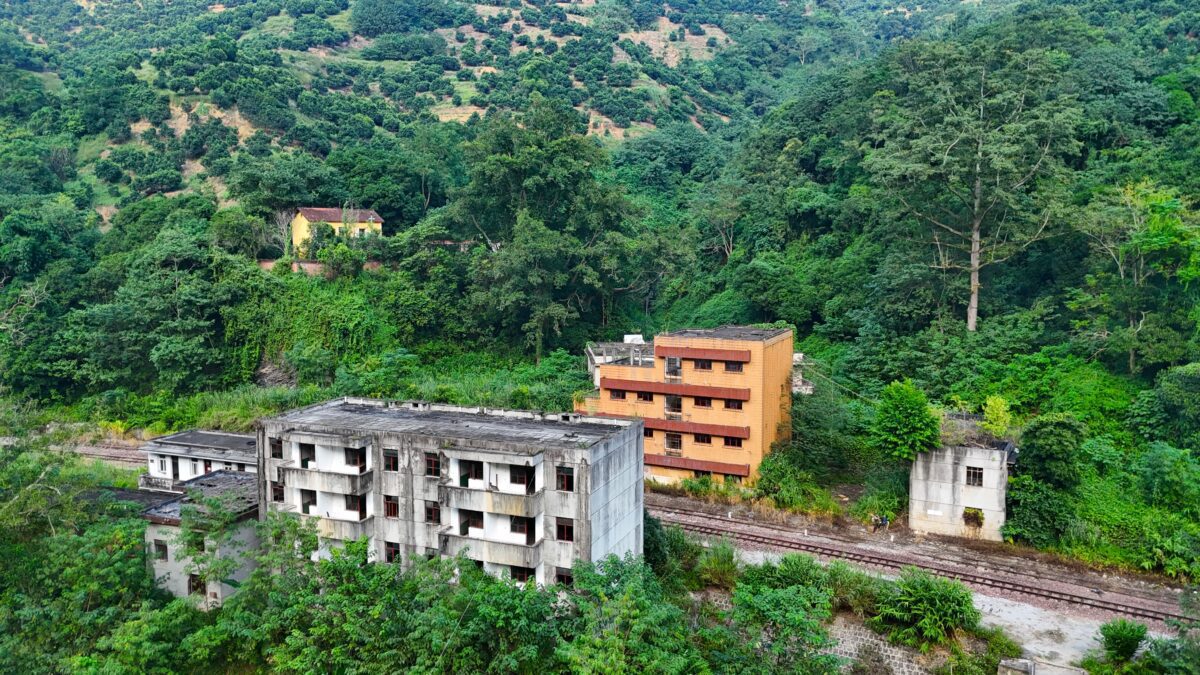
Despite its current state, Lahadi was once a bustling station. Train station personnel switching shifts, trains hauling supplies coming from two directions, and local Miao minority villagers hustling to sell fruits on and off the trains were all everyday sights. Among the ghostly structures still standing, is a two-story, mustard-yellow French house sitting on a hill hidden above the station grounds.
History of French Locals
Local lore has it that former French engineers and technicians once lived here, overseeing operations. With its turntable, proximity to the border station in Hekou, Vietnam further south, and Renzi Bridge just up ahead, Lahadi played a pivotal role in the development of other Yunnan-Vietnam Railway train stations and projects up north. Without it, manpower and supplies would have had to go through more treacherous and difficult routes.
Directly across from the main train station building used to be an old communication center, designed by the French occupying the area. Local lore speaks of a French clinic that was established next door, staffed by a French nurse who resided in the same French building. Locals say that she lived at Lahadi Train Station till her passing. Buried right outside her home, some say you can still hear her voice lingering in the night.

Tragedy and Decline
Unfortunately, on August 13, 2020, a massive mudslide struck in the early hours of the morning, wiping out large portions of the old train station, its original train tracks, and train carriages. The iconic locomotive turntable was buried beneath, never to resurface again. Though locals cleaned up the mudslide, Lahadi Train Station permanently closed the following month. Listed as a protected cultural relic in 2016, Lahadi Train Station has yet to receive any new funding for renovations or upgrades to halt its decline. The massive mudslide has most likely solidified that future.
I walk down to the southern portion of the train station where the Lahadi Train Station sign is located. The signage has since completely peeled off, with the faint line strokes of the Chinese character “腊” barely visible, reminding passerby of its fading legacy. The Yunnan-Vietnam Railway, once a lifeline connecting different cultures and global economies, now faces the challenge of remaining relevant in a rapidly changing world.
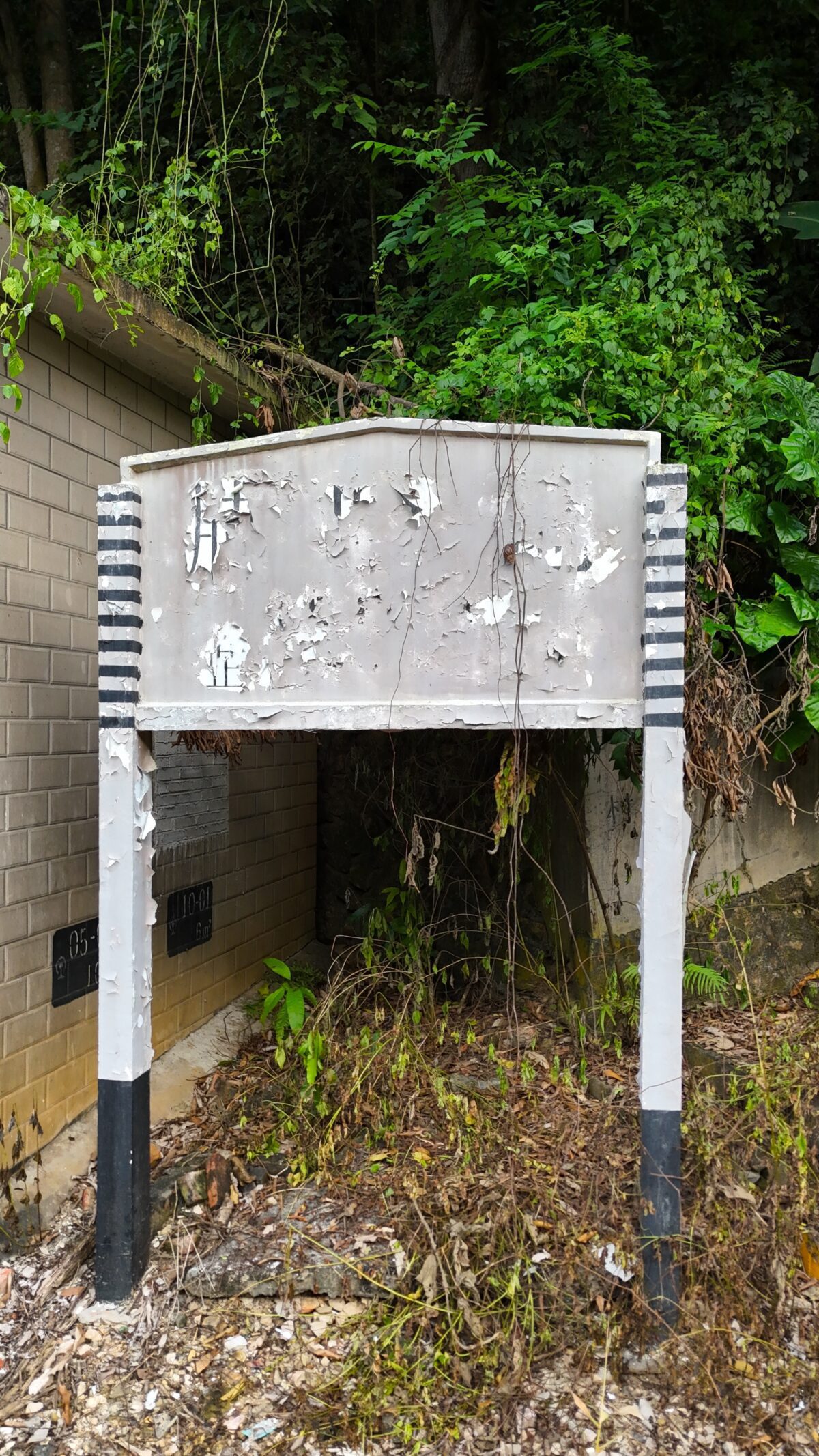
For now, the station will continue serving as a haunting relic of history. Local metal scrappers search the station’s surroundings for metal parts, while adventurers seek to uncover forgotten stories of the Yunnan-Vietnam Railway amongst its ruins. With no clear future plans, Lahadi Train Station’s future reflects a broader struggle of balancing modernization with historical preservation in remote regions of China.
